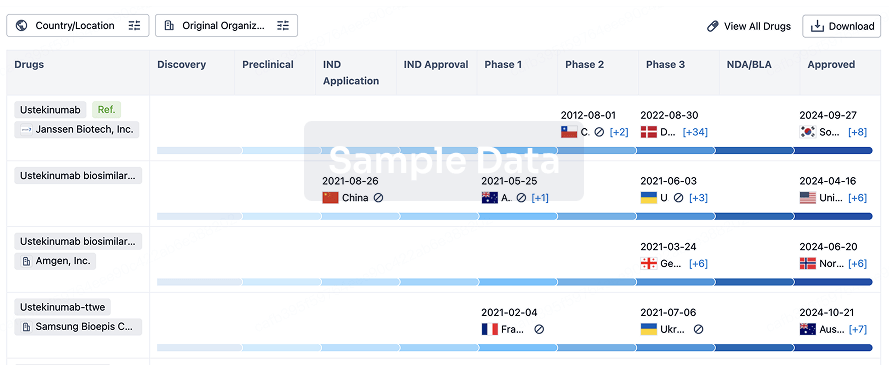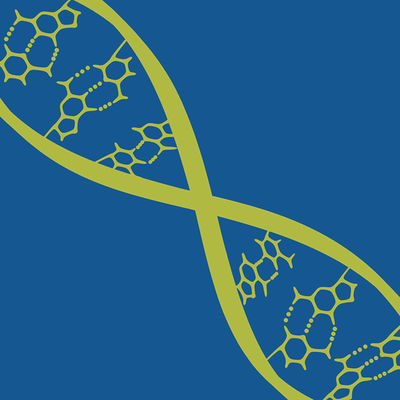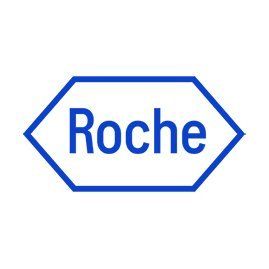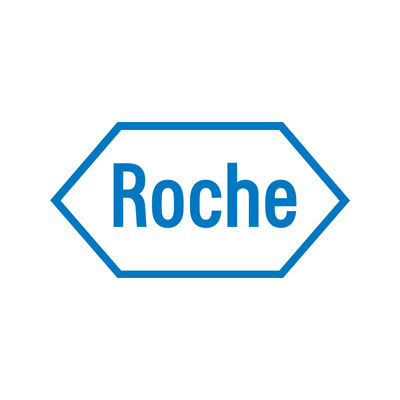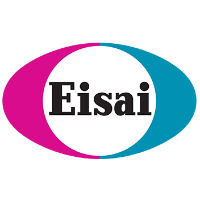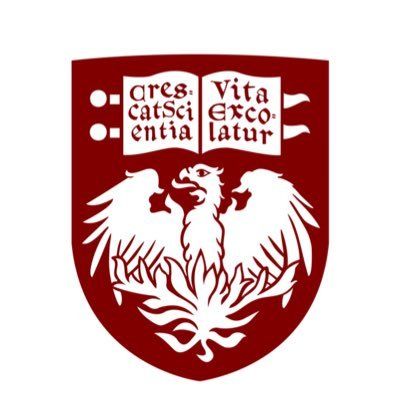At interim analysis, giredestrant demonstrated a statistically significant and clinically meaningful benefit versus standard-of-care endocrine monotherapyThese unprecedented results support its potential as a new standard-of-care endocrine therapy in the early-stage settingData to be presented at an upcoming medical meeting and shared with health authorities around the world lidERA is the second positive phase III readout for giredestrant following evERA presented at ESMO 20251 Basel, 18 November 2025 - Roche (SIX: RO, ROG; OTCQX: RHHBY) announced today positive phase III results from the lidERA Breast Cancer study evaluating investigational giredestrant as an adjuvant endocrine treatment for people with oestrogen receptor (ER)-positive, human epidermal growth factor receptor 2 (HER2)-negative, early-stage breast cancer. The study met its primary endpoint at a pre-planned interim analysis, showing a statistically significant and clinically meaningful improvement in invasive disease-free survival with giredestrant versus standard-of-care endocrine therapy. lidERA is the first phase III trial of a selective oestrogen receptor degrader (SERD) to demonstrate a significant benefit in the adjuvant setting. The majority of breast cancer cases are diagnosed at an early stage.2 “Today’s results underscore the potential of giredestrant as a new endocrine therapy of choice for people with early-stage breast cancer, where there is a chance for cure,” said Levi Garraway, MD, PhD, Roche’s Chief Medical Officer and Head of Global Product Development. “Given that ER-positive breast cancer accounts for approximately 70% of cases diagnosed, these findings – together with recent data in the advanced ER-positive setting – suggest that giredestrant has the potential to improve outcomes for many people with this disease.” Overall survival data were immature at the time of interim analysis, but a clear positive trend was observed. Giredestrant was well tolerated and adverse events were consistent with its known safety profile, with no unexpected safety findings observed. Data from lidERA will be presented at an upcoming medical meeting and shared with health authorities with the aim of bringing this potential treatment option to patients around the world. ER-positive breast cancer accounts for approximately 70% of breast cancer cases.3 Currently, up to a third of people eventually experience recurrence on or after adjuvant endocrine therapy treatment for early-stage breast cancer.4-6 Additionally, many have to interrupt or stop treatment early due to safety or tolerability issues, thereby increasing the risk of death.7,8 These limitations underscore the need for more effective and better-tolerated options that can enhance adherence and prevent or delay disease recurrence. lidERA is the second positive phase III readout for giredestrant following evERA Breast Cancer, which was presented at the European Society for Medical Oncology Congress 2025.1 The scientific rationale for lidERA was supported by prior results in the neoadjuvant setting, including the coopERA trial showing that giredestrant was superior to an aromatase inhibitor in reducing malignant cell division (Ki67 levels).9 This growing body of evidence supports the potential of giredestrant to meaningfully improve outcomes compared with standard-of-care endocrine therapy across ER-positive early-stage and advanced breast cancer.1 Roche’s extensive giredestrant clinical development programme spans multiple treatment settings and lines of therapy, reflecting our commitment to deliver innovative medicines to as many people with ER-positive breast cancer as possible. About the lidERA Breast Cancer study lidERA Breast Cancer [NCT04961996] is a phase III, randomised, open-label, multicentre study evaluating the efficacy and safety of adjuvant giredestrant versus standard-of-care endocrine therapy in people with medium- or high-risk stage I-III oestrogen receptor-positive, human epidermal growth factor receptor 2-negative breast cancer. Over 4,100 patients were enrolled in the study.10 The primary endpoint is invasive disease-free survival (iDFS) excluding unrelated cancers in other organs (second primary non-breast cancers).10 Key secondary endpoints include overall survival, iDFS including second primary non-breast cancers, disease-free survival and safety.10 About giredestrant Giredestrant is an investigational, oral, potent next-generation selective oestrogen receptor degrader and full antagonist.11 Giredestrant is designed to block oestrogen from binding to the oestrogen receptor, triggering its breakdown (known as degradation) and stopping or slowing down the growth of cancer cells.12 Giredestrant has an extensive clinical development programme and is being investigated in five company-sponsored phase III clinical trials that span multiple treatment settings and lines of therapy to benefit as many people as possible: Giredestrant versus standard-of-care endocrine therapy (SoC ET) as adjuvant treatment in oestrogen receptor (ER)-positive, human epidermal growth factor receptor 2 (HER2)-negative early-stage breast cancer (lidERA Breast Cancer; NCT04961996)10Giredestrant plus everolimus versus SoC ET plus everolimus in ER-positive, HER2-negative, locally advanced or metastatic breast cancer (evERA Breast Cancer; NCT05306340)13Giredestrant plus palbociclib versus letrozole plus palbociclib in ER-positive, HER2-negative, endocrine-sensitive, recurrent locally advanced or metastatic breast cancer (persevERA Breast Cancer; NCT04546009)14 Giredestrant plus investigator’s choice of a cyclin-dependent kinase 4/6 (CDK4/6) inhibitor versus fulvestrant plus a CDK4/6 inhibitor in ER-positive, HER2-negative advanced breast cancer resistant to adjuvant endocrine therapy (pionERA Breast Cancer; NCT06065748)15Giredestrant plus Phesgo® (pertuzumab, trastuzumab, and hyaluronidase subcutaneous) versus Phesgo in ER-positive, HER2-positive locally advanced or metastatic breast cancer (heredERA Breast Cancer; NCT05296798)16 About oestrogen receptor (ER)-positive breast cancer Globally, the burden of breast cancer continues to grow, with 2.3 million women diagnosed and 670,000 dying from the disease every year.17 Breast cancer remains the number one cause of cancer-related deaths amongst women, and the second most common cancer type.18 ER-positive breast cancer accounts for approximately 70% of breast cancer cases.4 A defining feature of ER-positive breast cancer is that its tumour cells have receptors that attach to oestrogen, which can contribute to tumour growth.19 Despite treatment advances, ER-positive breast cancer remains particularly challenging to treat due to its biological complexity.20 Patients often face the risk of disease progression, treatment side effects and resistance to endocrine therapy.20,21 There is an urgent need for more effective treatments that can delay clinical progression and reduce the burden of treatment on people’s lives.20,21 About Roche in breast cancer Roche has been advancing breast cancer research for more than 30 years, and it continues to be a major focus of research and development. Our legacy began with the development of the first targeted therapy for human epidermal growth factor receptor 2-positive breast cancer, and we continue to push the boundaries of science to address the complexities of all breast cancer subtypes. By leveraging our dual expertise in pharmaceuticals and diagnostics, we are dedicated to providing tailored treatment approaches and improving outcomes for every patient, from early to advanced stages of the disease. Together with our partners, we are relentlessly pursuing a cure, as we strive for a future where no one dies from breast cancer. About Roche Founded in 1896 in Basel, Switzerland, as one of the first industrial manufacturers of branded medicines, Roche has grown into the world’s largest biotechnology company and the global leader in in-vitro diagnostics. The company pursues scientific excellence to discover and develop medicines and diagnostics for improving and saving the lives of people around the world. We are a pioneer in personalised healthcare and want to further transform how healthcare is delivered to have an even greater impact. To provide the best care for each person we partner with many stakeholders and combine our strengths in Diagnostics and Pharma with data insights from the clinical practice. For over 125 years, sustainability has been an integral part of Roche’s business. As a science-driven company, our greatest contribution to society is developing innovative medicines and diagnostics that help people live healthier lives. Roche is committed to the Science Based Targets initiative and the Sustainable Markets Initiative to achieve net zero by 2045. Genentech, in the United States, is a wholly owned member of the Roche Group. Roche is the majority shareholder in Chugai Pharmaceutical, Japan. For more information, please visit www.roche.com. All trademarks used or mentioned in this release are protected by law. References [1] Mayer E, et al. Giredestrant (GIRE), an oral selective oestrogen receptor (ER) antagonist and degrader, + everolimus (E) in patients (pts) with ER-positive, HER2-negative advanced breast cancer (ER+, HER2– aBC) previously treated with a CDK4/6 inhibitor (i): Primary results of the Phase III evERA BC trial. Presented at: ESMO Congress; 2025 October 17-21; Berlin, Germany. LBA #16.[2] Benitez Fuentes JD, et al. Global Stage Distribution of Breast Cancer at Diagnosis. A Systematic Review and Meta-Analysis. JAMA Oncol. 2024;10(1):71-78.[3] Kinslow C, et al. Prevalence of Estrogen Receptor Alpha (ESR1) Somatic Mutations in Breast Cancer. JNCI Cancer Spectrum; 2022 Oct;6(5):pkac060.[4] O’Shaughnessy J, et al. Real-world risk of recurrence and treatment outcomes with adjuvant endocrine therapy in patients with stage II-III HR+/HER2- early breast cancer. Breast. 2025; 81:104437.[5] Pan H, et al. 20-Year Risks of Breast-Cancer Recurrence after Stopping Endocrine Therapy at 5 Years. NEJM. 2017;377:1836–1846.[6] Khatpe AS, et al. Nexus between PI3K/AKT and Estrogen Receptor Signaling in Breast Cancer. Cancers (Basel). 2021;13(3):369.[7] Hershman DL, et al. Early discontinuation and non-adherence to adjuvant hormonal therapy are associated with increased mortality in women with breast cancer. Breast Cancer Res Treat. 2011;126:529–537.[8] Rosso R, et al. Adherence to Adjuvant Endocrine Therapy in Breast Cancer Patients. Curr Oncol. 2023 Jan 21;30(2):1461-1472.[9] Hurvitz SA, et al. Neoadjuvant palbociclib plus either giredestrant or anastrozole in oestrogen receptor-positive, HER2-negative, early breast cancer (coopERA Breast Cancer): an open-label, randomised, controlled, phase 2 study. Lancet Oncol. 2023;24:1029–1041.[10] ClinicalTrials.gov. A Study Evaluating the Efficacy and Safety of Adjuvant Giredestrant Compared With Physician's Choice of Adjuvant Endocrine Monotherapy in Participants With Estrogen Receptor-Positive, HER2-Negative Early Breast Cancer (lidERA Breast Cancer) [Internet; cited 2025 November]. Available from: https://clinicaltrials.gov/study/NCT04961996. [11] Martin M, et al. Giredestrant (GDC-9545) vs physician choice of endocrine monotherapy (PCET) in patients (pts) with ER+, HER2– locally advanced/metastatic breast cancer (LA/mBC): Primary analysis of the phase 2, randomised, open-label acelERA BC study. Presented at: The European Society for Medical Oncology Annual Meeting; 2022 September 9-13; Paris, France. Abstract #211MO.[12] Metcalfe C, et al. GDC-9545: A novel ER antagonist and clinical candidate that combines desirable mechanistic and pre-clinical DMPK attributes. Presented at: San Antonio Breast Cancer Symposium; 2018 December 4-8; San Antonio, Texas, USA. Abstract #P5-04-07.[13] ClinicalTrials.gov. A Study Evaluating the Efficacy and Safety of Giredestrant Plus Everolimus Compared With the Physician's Choice of Endocrine Therapy Plus Everolimus in Participants With Estrogen Receptor-Positive, HER2-Negative, Locally Advanced or Metastatic Breast Cancer (evERA Breast Cancer) [Internet; cited 2025 November]. Available from: https://clinicaltrials.gov/study/NCT05306340.[14] ClinicalTrials.gov. A Study Evaluating the Efficacy and Safety of Giredestrant Combined With Palbociclib Compared With Letrozole Combined With Palbociclib in Participants With Estrogen Receptor-Positive, HER2-Negative Locally Advanced or Metastatic Breast Cancer (persevERA Breast Cancer) [Internet; cited 2025 November]. Available from: https://clinicaltrials.gov/study/NCT04546009. [15] ClinicalTrials.gov. A Study to Evaluate Efficacy and Safety of Giredestrant Compared With Fulvestrant (Plus a CDK4/ 6 Inhibitor), in Participants With ER-Positive, HER2-Negative Advanced Breast Cancer Resistant to Adjuvant Endocrine Therapy (pionERA Breast Cancer) [Internet; cited 2025 November]. Available from: https://clinicaltrials.gov/study/NCT06065748. [16] ClinicalTrials.gov. A Study to Evaluate the Efficacy and Safety of Giredestrant in Combination With Phesgo (Pertuzumab, Trastuzumab, and Hyaluronidase-zzxf) Versus Phesgo in Participants With Locally Advanced or Metastatic Breast Cancer (heredERA Breast Cancer) [Internet; cited 2025 November]. Available from: https://clinicaltrials.gov/study/NCT05296798.[17] World Health Organisation. Breast Cancer [Internet; cited 2025 November]. Available from: https://www.who.int/news-room/fact-sheets/detail/breast-cancer. [18] World Health Organization. Cancer Today [Internet; cited 2025 November]. Available from: https://gco.iarc.fr/today/en/dataviz/bars?mode=cancer&types=1&group_populations=1&sexes=2&key=asr&age_end=14. [19] National Cancer Institute. Hormone Therapy for Breast Cancer [Internet; cited 2025 November]. Available from: https://www.cancer.gov/types/breast/breast-hormone-therapy-fact-sheet. [20] Hanker A, et al. Overcoming Endocrine Resistance in Breast Cancer. Canc Cell. 2020 Apr 13;37(4):496–513.[21] Başaran G, et al. Ongoing unmet needs in treating estrogen receptor-positive/HER2-negative metastatic breast cancer. Cancer Treat Rev. 2018 Feb;63:144-55. Roche Global Media Relations Phone: +41 61 688 8888 / e-mail: media.relations@roche.com Hans Trees, PhD Phone: +41 79 407 72 58 Sileia Urech Phone: +41 79 935 81 48
Nathalie Altermatt Phone: +41 79 771 05 25 Lorena Corfas Phone: +41 79 568 24 95
Simon Goldsborough Phone: +44 797 32 72 915 Karsten Kleine Phone: +41 79 461 86 83
Kirti Pandey Phone: +49 172 6367262 Yvette Petillon Phone: +41 79 961 92 50
Dr Rebekka Schnell Phone: +41 79 205 27 03
Roche Investor Relations Dr Bruno Eschli Phone: +41 61 68-75284 e-mail: bruno.eschli@roche.com Dr Sabine Borngräber Phone: +41 61 68-88027 e-mail: sabine.borngraeber@roche.com
Dr Birgit Masjost Phone: +41 61 68-84814 e-mail: birgit.masjost@roche.com
Investor Relations North America Loren Kalm Phone: +1 650 225 3217 e-mail: kalm.loren@gene.com
Attachment
Media & Investor Release lidERA giredestrant English







